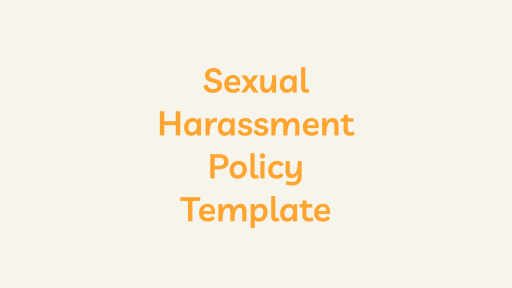What does the Office Safety Policy Template consist of?
The Office Safety Policy Template includes an introduction emphasizing the importance of safety, outlines responsibilities for employees and managers, and provides emergency procedures. It covers key safety areas such as fire safety, evacuation plans, first aid, and reporting hazards. The template aims to create a secure and healthy office environment by establishing guidelines for preventing accidents and responding to emergencies.
Template
Office Safety Policy
1. Purpose
The purpose of this Office Safety Policy is to ensure the health and safety of all employees, visitors, and contractors within our office premises. It is our commitment to provide a safe working environment and prevent accidents, injuries, and occupational hazards.
2. Responsibilities
2.1 Management Responsibilities:
- Establish and maintain a comprehensive office safety program.
- Allocate necessary resources to implement and enforce safety measures.
- Appoint a designated safety officer responsible for overseeing safety initiatives.
- Conduct regular inspections and risk assessments to identify potential hazards.
- Provide appropriate training and education on office safety practices.
- Ensure compliance with applicable laws, regulations, and industry standards.
2.2 Employee Responsibilities:
- Follow all office safety rules, procedures, and guidelines.
- Report any safety concerns, hazards, or incidents to the designated safety officer.
- Participate in safety training programs and actively contribute to maintaining a safe work environment.
- Use safety equipment, such as personal protective equipment (PPE), as instructed.
- Cooperate with management in implementing safety measures and suggestions for improvement.
3. Office Environment Safety
3.1 Ergonomics:
- Ensure workstations are ergonomically designed to promote proper posture and reduce the risk of musculoskeletal disorders.
- Provide adjustable chairs, desks, and monitor stands to support individual comfort and well-being.
- Encourage regular breaks and stretching exercises to prevent physical strain and fatigue.
3.2 Lighting:
- Ensure proper lighting levels throughout the office to prevent eye strain and improve visibility.
- Maintain well-lit hallways, stairwells, and emergency exits.
- Promptly address any lighting issues or burnt-out bulbs.
3.3 Electrical Safety:
- Regularly inspect electrical equipment, cords, and outlets for signs of damage or wear.
- Use surge protectors and power strips with built-in circuit breakers.
- Avoid overloading outlets and use proper grounding techniques.
- Report any electrical issues or malfunctions immediately.
3.4 Fire Safety:
- Conduct regular fire drills and ensure all employees are familiar with evacuation routes and assembly points.
- Maintain unobstructed access to fire extinguishers, fire alarms, and emergency exits.
- Regularly inspect and test fire suppression systems and equipment.
- Prohibit smoking in unauthorized areas and properly dispose of smoking materials.
3.5 Hazardous Materials:
- Store hazardous substances in designated areas with proper labeling and appropriate safety measures.
- Provide employees with relevant training on handling, storage, and disposal of hazardous materials.
- Maintain up-to-date safety data sheets (SDS) for all hazardous substances used in the office.
- Implement spill response procedures and provide appropriate spill kits.
3.6 Housekeeping:
- Keep work areas clean, organized, and free from clutter.
- Promptly clean up spills, leaks, or debris to prevent slips, trips, and falls.
- Regularly inspect and maintain office furniture, fixtures, and equipment for safety.
3.7 Security:
- Implement access control measures to prevent unauthorized entry into the office premises.
- Install and maintain security systems, including CCTV cameras and alarms.
- Conduct background checks on employees and visitors as necessary.
- Establish protocols for reporting suspicious activities or security breaches.
Reporting Incidents and Near Misses
- Promptly report all workplace incidents, accidents, injuries, and near misses to your supervisor or the designated safety officer.
- Provide accurate and detailed information to facilitate investigations and necessary actions to prevent future incidents.
Training and Education
- The company will provide adequate safety training and education to all employees, covering topics such as emergency procedures, hazard identification, and safe work practices.
- Employees are expected to actively participate in safety training programs and apply the knowledge gained to their daily work activities.
Policy Compliance
- Compliance with this Office Safety Policy is mandatory for all employees.
- Failure to comply with safety policies and procedures may result in disciplinary action, up to and including termination, depending on the severity and frequency of the violation.
Policy Review
- This Office Safety Policy will be reviewed periodically to ensure its effectiveness and compliance with applicable laws and regulations.
- Employees will be notified of any updates or changes to the policy.
By following this Office Safety Policy, we can create a safe and healthy work environment for everyone. Together, we can prevent accidents and injuries, promote well-being, and enhance productivity.
Employee:
I have read and understood the Office Security Policy, and I do not have any questions.
[Employee’s Full Name]
[Employee’s Signature]
[Date]
Company:
[Company Name]
[Company Representative’s Name]
[Company Representative’s Title]
[Company Representative’s Signature]
[Date]





